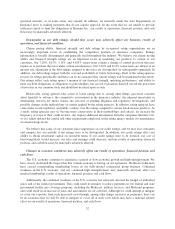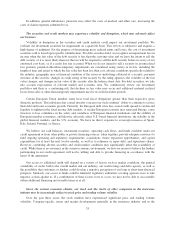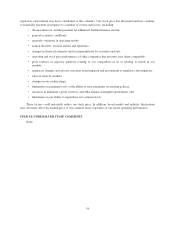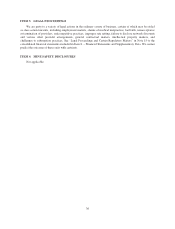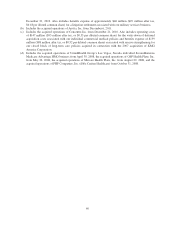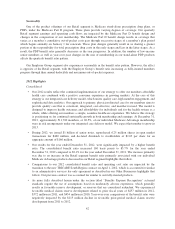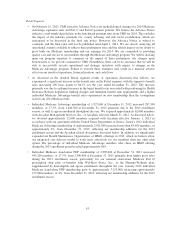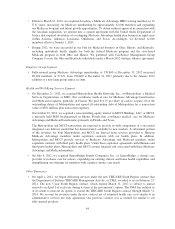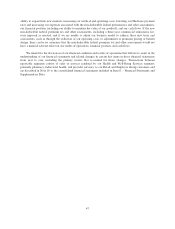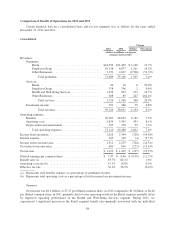Humana 2012 Annual Report Download - page 51
Download and view the complete annual report
Please find page 51 of the 2012 Humana annual report below. You can navigate through the pages in the report by either clicking on the pages listed below, or by using the keyword search tool below to find specific information within the annual report.ITEM 7. MANAGEMENT’S DISCUSSION AND ANALYSIS OF FINANCIAL CONDITION AND
RESULTS OF OPERATIONS
Executive Overview
General
Headquartered in Louisville, Kentucky, Humana is a leading health care company that offers a wide range
of insurance products and health and wellness services that incorporate an integrated approach to lifelong well-
being. By leveraging the strengths of our core businesses, we believe that we can better explore opportunities for
existing and emerging adjacencies in health care that can further enhance wellness opportunities for the millions
of people across the nation with whom we have relationships.
Our industry relies on two key statistics to measure performance. The benefit ratio, which is computed by
taking total benefits expense as a percentage of premiums revenue, represents a statistic used to measure
underwriting profitability. The operating cost ratio, which is computed by taking total operating costs as a
percentage of total revenue less investment income, represents a statistic used to measure administrative
spending efficiency.
Business Segments
We manage our business with three reportable segments: Retail, Employer Group, and Health and Well-
Being Services. In addition, the Other Businesses category includes businesses that are not individually
reportable because they do not meet the quantitative thresholds required by generally accepted accounting
principles. These segments are based on a combination of the type of health plan customer and adjacent
businesses centered on well-being solutions for our health plans and other customers, as described below. These
segment groupings are consistent with information used by our Chief Executive Officer to assess performance
and allocate resources.
The Retail segment consists of Medicare and commercial fully-insured medical and specialty health
insurance benefits, including dental, vision, and other supplemental health and financial protection products,
marketed directly to individuals. The Employer Group segment consists of Medicare and commercial fully-
insured medical and specialty health insurance benefits, including dental, vision, and other supplemental health
and financial protection products, as well as administrative services only products marketed to employer groups.
The Health and Well-Being Services segment includes services offered to our health plan members as well as to
third parties that promote health and wellness, including provider services, pharmacy, integrated wellness, and
home care services. The Other Businesses category consists of our military services, primarily our TRICARE
South Region contract, Medicaid, and closed-block long-term care businesses as well as our contract with CMS
to administer the Limited Income Newly Eligible Transition program, or the LI-NET program.
The results of each segment are measured by income before income taxes. Transactions between reportable
segments consist of sales of services rendered by our Health and Well-Being Services segment, primarily
pharmacy, behavioral health, and provider services, to our Retail and Employer Group customers. Intersegment
sales and expenses are recorded at fair value and eliminated in consolidation. Members served by our segments
often utilize the same provider networks, enabling us in some instances to obtain more favorable contract terms
with providers. Our segments also share indirect costs and assets. As a result, the profitability of each segment is
interdependent. We allocate most operating expenses to our segments. Assets and certain corporate income and
expenses are not allocated to the segments, including the portion of investment income not supporting segment
operations, interest expense on corporate debt, and certain other corporate expenses. These items are managed at
the corporate level. These corporate amounts are reported separately from our reportable segments and included
with intersegment eliminations.
41



